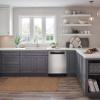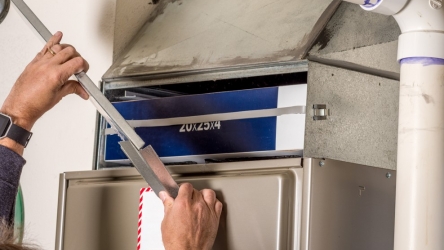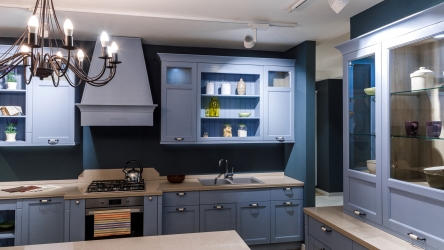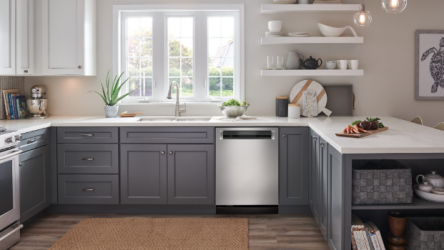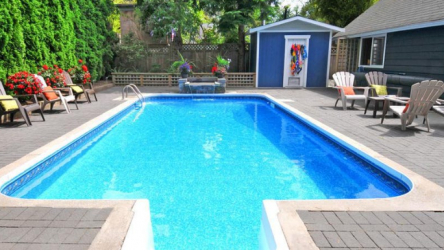
If you’re considering hardwood flooring for your home, you’ve made a great choice! Hardwood floors are timelessly beautiful and go with any décor style. Plus, they can increase the value of your home. But with so many types of hardwood flooring on the market, it can be tough to pick the perfect one. Read on for tips on how to choose the right hardwood flooring for your home.
Measure Your Rooms
Before you start shopping around, be sure to take accurate measurements of the area you plan to install your flooring. This will ensure that you don’t end up with too much or too little material. Additionally, it’s important to measure the room width and length separately since they may not be exactly equal due to possible irregularities in the walls. Also, consider any obstacles, such as doors, windows, or built-in furniture pieces, that may pose an issue during installation.
Consider Your Budget
The next step in finding the perfect hardwood floors is to consider your budget. Hardwood flooring comes in a variety of price points, so it’s important to determine what you’re willing and able to spend upfront. This will help narrow down your options and make it easier to find something that fits within your budget.
Consider Your Lifestyle
Now you should consider when picking out hardwood floors how you live in your home. If you have kids and pets, opt for a hardwood that is scratch-resistant and easy to clean (like engineered oak flooring or maple). If your space experiences high traffic (like an entryway or hallway), choose a harder wood like hickory or walnut; these will stand up better to wear and tear. Similarly, if your home has high humidity levels (like in a bathroom or kitchen), consider engineered hardwoods that are more stable than solid woods in those conditions.
Think About price and Maintenance
It’s also important to consider other factors, such as price and maintenance, when selecting the perfect hardwood flooring. Unfinished solid wood floors tend to cost less but require more labor because they must be stained after installation. Prefinished wood floors are easier to install but typically cost more upfront—but they may save money in the long run since they don’t require sanding or staining afterward. Engineered woods usually fall somewhere between these two categories in terms of cost and maintenance requirements. Ultimately, it’s important to think about how much time and money you want to spend on upkeep before committing to a type of wood flooring.
Type of Wood
The first thing to consider is the type of wood you want for your floors. Different types of woods offer different levels of durability and hardness, as well as varied aesthetics and grain patterns. Hardwoods like maple or oak are popular options because they are dense and offer excellent wear resistance. However, there are softer woods like hickory or pine that may be more suitable if you’re looking for something with more character.
Think About Durability
Durability is an important factor in determining which type of hardwood is right for your home. Hardness ratings (measured by Janka rating) determine how resistant each species is against wear and tear over time, so be sure to ask about this before making a purchase decision. Red oak has one of the highest Janka ratings at 1290, while Brazilian cherry is one of the hardest at 2350; however, there are many other species that fall between those two extremes so be sure to do some research before committing!
Decide What Color You Want
You also want to think about what color hardwood floor works best in your space before making a purchase decision. For example, do you prefer light or dark colors? Oak is known for its light tones, while walnut has darker shades that create an elegant look. You can also find other colors like cherry (reddish) or bamboo (yellowish). Consider what existing furniture pieces you have as well as what kind of color palette would work best with them when deciding on hue; this will help ensure that all elements coordinate nicely together once installed.
Installation Method
Depending on the type of hardwood flooring that you choose, there are several different methods available for installation. If you want to save money and do it yourself, then an engineered floating floor might be the right choice for you. This method involves laying down multiple thin layers of engineered wood planks on top of a foam underlayment before locking them together with tongue-and-groove joints. If you want something more permanent, then full-thickness solid hardwood planks with nails or staples might be the better option.
Finishes And Treatments
When choosing hardwood floors for your home, it’s important to consider what kind of finishes and treatments will best suit your needs. Some finishes are designed to provide extra protection against water damage, while others are more decorative in nature and meant to enhance the natural beauty of the wood grain patterns. Depending on how much foot traffic your floors will get, some people opt for an extra durable finish such as urethane or polyurethane while others prefer a more natural finish such as oil-based wax or shellac.
Once you have considered all of these factors—lifestyle needs, price and maintenance requirements, color preferences, etc.—you should be ready to make an informed decision about which type of hardwood flooring is right for your home! Do some research online, visit local stores in person if possible, and ask questions along the way until you find the perfect option that fits both your budget and design aesthetic perfectly! Good luck!


